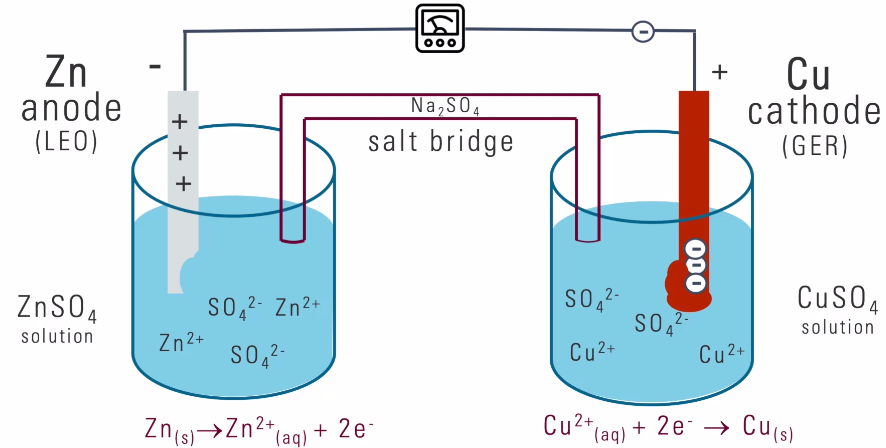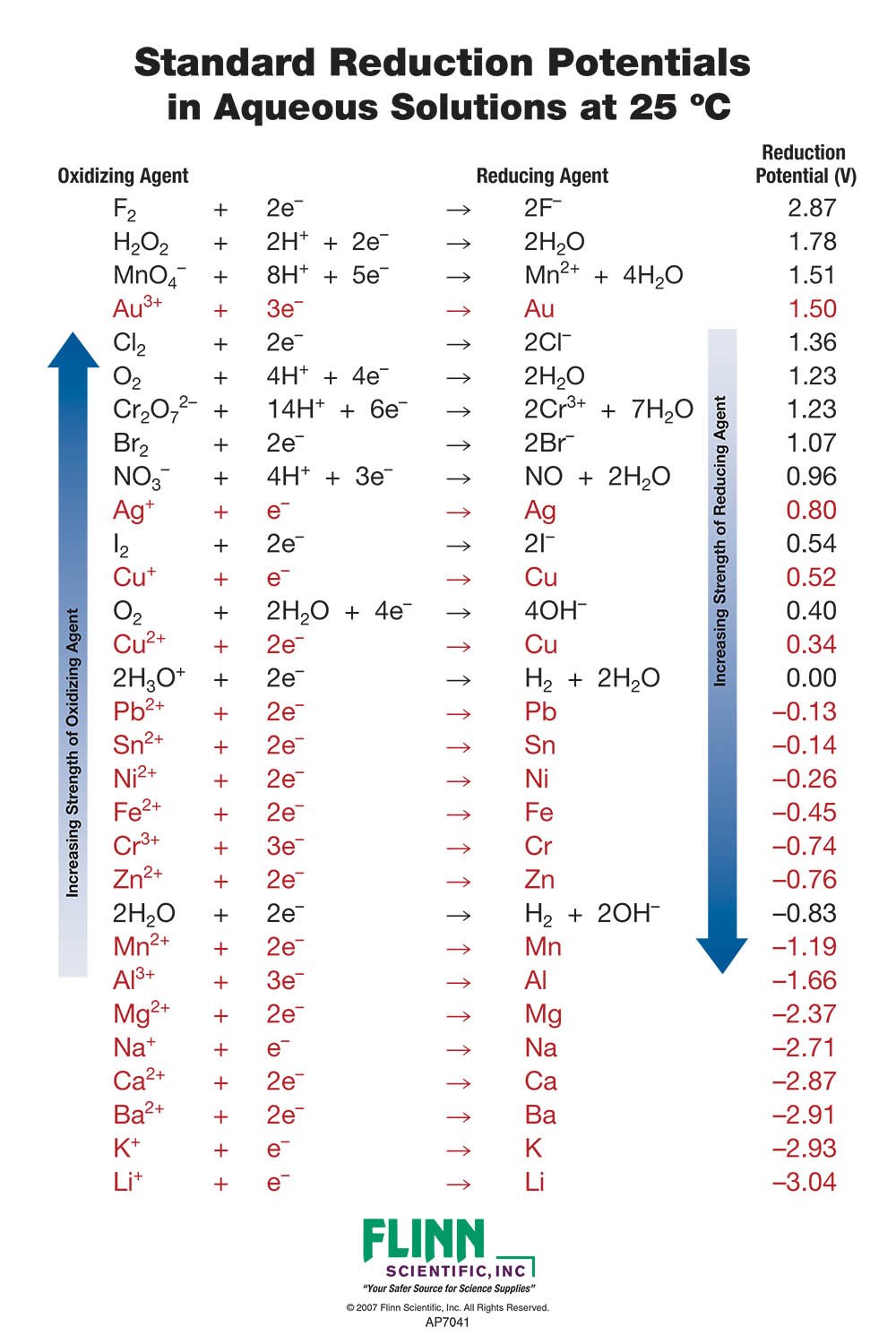Types of Reactions¶
Solubility¶
Salts dissolve in water to form electrolyte solutions (though some have extremely small solubility)
- < 0.01 \frac{mol}{L}: insoluble
- < 0.1 \frac{mol}{L}: slightly soluble
- else: soluble

Precipitation¶
Write Net Ionic Equations¶
- find insoluble salt from the product
- only this salt and its ions are participated in the reaction
Equation: MgBr2(aq) + PbSO4(aq) -> PbBr2(s) + MgSO4(aq)
Net Ionic Equation: Pb2+(aq) + Br- -> PbBr2(s)
Acid and Base Reaction¶
See Acid and Bases
Redox Reaction¶
Oxidizing agent: the atom let other atom loses electrons, has higher oxidation number
Reducing agent: the atom let other atom gains electrons
Mg(s) + Cl2 -> Mg2+ + Cl-
Reducing agent + Oxidizing agent -> "Conjugate" oxidizing agent + "Conjugate" reducing agent
Oxidation and Reduction Reaction are strongly product favoured: Mg and Cl are stronger reducing agent and oxidizing agent then Mg2+ and Cl-
Oxidation Numbers¶
The total number of electrons that an atom either gains or loses in order to form a chemical bond with another atom.
Calculation Method 1¶
ON = core charge - (number of non-bonding electrons) - (number of bonding electrons in bonds to less electronegative elements)
Calculation Method 2¶
- The sum of all the oxidation numbers in a species equals its charge zero for a neutral molecule.
- Atoms in elemental form (e.g., Br2(I), Fe(s), O2(g)) have oxidation number zero.
- Fluorine (the most electronegative element) has oxidation number, -1, in all of its compounds.
- Oxygen (the next most electronegative element) has oxidation number, -2, in its compounds - except in peroxides (A-O-O-B compounds such as H2O2) where it has oxidation number, -1, and in F2O where it has oxidation number, +2.
- Chlorine, bromine and iodine have oxidation number -1, unless bonded to a more electronegative element.
- Group 16 elements, such as Sulfur and Selenium, have oxidation number -2. unless bonded to a more electronegative element. Group 15 elements, such as Nitrogen and Phosphotus, have oxidation number -3, unless bonded to a more electronegative element.
- Hydrogen has oxidation number, +1, when bonded to non-metals (e.g. H2O and HN3), except hydrogen has oxidation number, -1, in PH3. Hydrogen has oxidation number -1 in main group metal (group I and II, Al, Ga, In, Tl, Sn, Pb and Bi) and semimetal (B, Si, Ge, As, Sb, Te and Po) hydrides.
- Some transition metals (e.g. Au) have higher electronegativity than hydrogen, and hydrogen has oxidation +1 in the associated compound.
Balence Redox Reactions¶
- balance 2 half reactions with respect to electrons
Acidic Solution¶
Balance the reaction using H2O and H+
- Identify the oxygen deficient side of the reaction. Add one H2O to that side for each missing oxygen atom.
- Identify the hydrogen deficient side of the reaction. Add one H+ to that side for each missing hydrogen atom.
Basic Solution¶
Balance the reaction using H2O and OH-
- Identify the oxygen deficient side of the reaction. Add one OH− to that side for each missing oxygen atom.
- Identify the hydrogen deficient side of the reaction. Add one H2O to that side, and one OH− to the other side, for each missing hydrogen atom.
Galvanic Cell¶
Cathod: reduction reaction
Anode: oxidation reaction

Standard Reduction/Oxidation Potential¶
Standard Reduction potential (E°red): likelihood of it will be reduced (gain electron)
Standard Oxidation Potential (E°ox): likelihood of it will be oxidized
Reduction potential of H = 0
E°red = electrode reduction potential - H reduction potential
E°ox = - E°red
Cathode should have higher E°red
Elements with higher reduction potential can oxidize elements with lower reduction potential (e.g. F2 + 2Cl- -> 2f- +Cl2)

Standard Cell Potential¶
- Preasure = 1bar
- Temperature = 298K
- [Salt solution] = 1 \frac{mol}{L}
E°cell = E°red,cathode + E°ox,anode
E°cell > 0: reaction will proceed
E°cell < 0: reaction will reverse
Disproportionation Reaction¶
A special kind of Redox reaction where oxidizing and reducing agents are the same species, and it reacts with itself.
e.g. 2H2O2 -> 2H2O + O2
Created: September 19, 2021